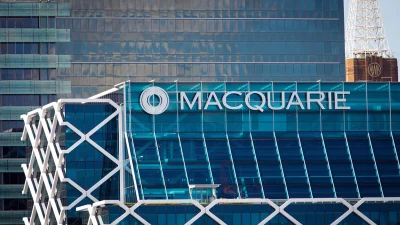Asset allocation on the defensive



The global financial crisis and heightened volatility have brought defensive funds back into the spotlight. Andrew Hair discusses the characteristics of true defensive assets and examines why some so-named funds suffered during the crisis.
The defensive portion of an investor’s portfolio should generally provide regular income, liquidity and capital protection.
It should also have a low correlation to growth assets. Asset classes such as term deposits, short-dated government bonds and cash are well-known defensive style assets which have traditionally been used to make up the defensive component of an investor’s portfolio.
Government bonds, for example – at least when issued from well-rated countries – meet many of the aforementioned key characteristics of a defensive asset class.
In difficult economic climates, when central banks reduce interest rates further than expected as a means of stimulating demand, bonds will generally perform well.
They provide income and liquidity, and they protect capital in this type of environment, whereas growth assets generally perform poorly.
However, bonds tend to underperform in the opposite market environment.
That is, when central banks need to stem growth and raise interest rates above expectations to control inflation, bond investments may underperform.
If the interest rate hikes are of a significant magnitude, the bond investment may produce a negative return, and consequently, fail to provide capital protection.
Term deposits also protect capital and have a low correlation to growth assets.
However, they may compromise liquidity because investors cannot exit without forfeiting return.
In future, under its proposed implementation of the Basel III liquidity requirements, the Australian Prudential Regulation Authority will require Australian banks to be far more strict before allowing early withdrawal of term deposits.
That said, the liquidity issue can generally be managed by diversifying across defensive portfolio options or staggering maturity dates.
If these safe asset classes traditionally dominated defensive portfolios, why did so many defensive portfolios underperform or produce negative returns through the global financial crisis (GFC)?
The answer is that the pre-GFC environment lulled investors into a false security and they shied away from these traditional vehicles.
Instead, they shifted their attention to generating higher returns from their defensive portfolios rather than seeking income, liquidity and capital protection.
Between 2003 and 2007, volatility was at abnormally low levels. Taking risk was generally rewarded over both the short and long-term.
During this period, many “diversified income funds” came to prominence.
These funds are multi-asset class funds that invest in a range of securities.
They were (and often still are) positioned as defensive, and became a popular alternative to bonds and cash.
Many of these funds aimed to achieve higher returns by taking on additional risk, which came in the form of exposure to growth assets such as equities, credit (which is positively correlated to equities), property and options.
The pre-GFC economic environment was extremely benign, and as such, the extra risk taken by these funds was handsomely rewarded, and for a time, many of these funds significantly outperformed.
However, during the GFC, the performance of some of these strategies plummeted, revealing that some diversified income funds had taken on too much risk to be considered truly defensive.
Investors were surprised by the high correlation between some diversified income funds and global equity markets.
In addition, large negative returns from some diversified income funds occurred at the time when global equity markets suffered their worst returns.
While some diversified income funds recovered over the next one to two years, it was an important reminder that should be adhered to regardless of the economic climate: defensive investing should be assessed over a relatively short time horizon – generally up to three years.
Although these funds may have a rightful place in an investor’s portfolio, they may not be suitable for a purely defensive strategy, particularly if capital preservation is a key objective.
For investors seeking a true defensive style fund, it’s important to understand the range of options available.
Current economic and market conditions have brought defensive investment options back into the spotlight.
Investors should maintain an allocation to traditional defensive assets such as cash and fixed interest, regardless of the environment.
Where other defensive options are considered, they should be risk focussed rather than return chasing – this approach will help the defensive portion of the portfolio to work throughout the economic cycle.
Andrew Hair is vice president, client and consultant relationships, Acadian Asset Management.
Recommended for you
In this episode of Relative Return Insider, host Keith Ford and AMP chief economist Shane Oliver unpack the RBA’s decision to keep the cash rate on hold in the face of rising inflation and whether the governor’s hawkish tone is a sign of things to come.
In this episode of Relative Return Insider, host Keith Ford and AMP chief economist Shane Oliver discuss the September quarter GDP figures, which show Australia’s economy regaining momentum.
In this new episode of The Manager Mix, host Laura Dew speaks to Haley Devine, head of wealth management at MaxCap Group, to delve into private credit and commercial real estate.
In this new episode of The Manager Mix, host Laura Dew speaks to Benjamin Leung, head of systematic investments at Macquarie Asset Management, to understand the use of systematic investments.







